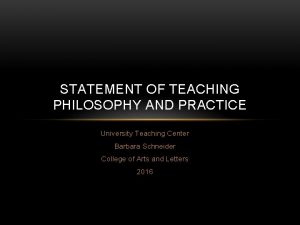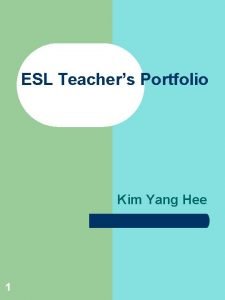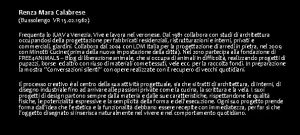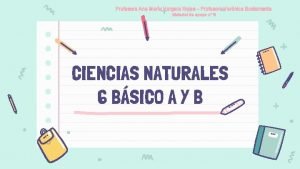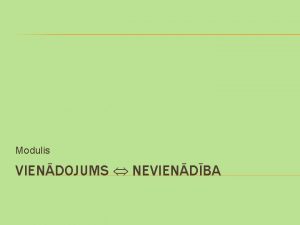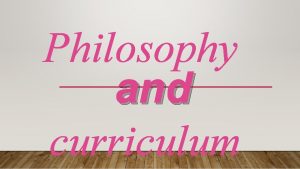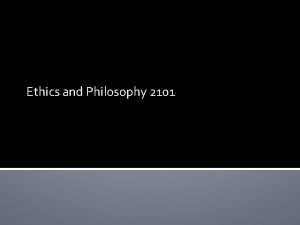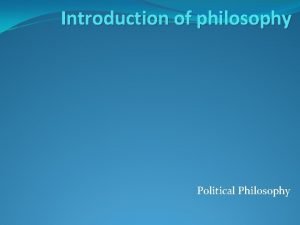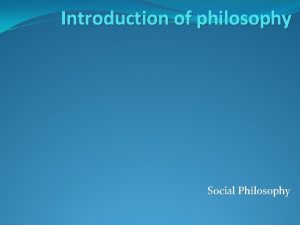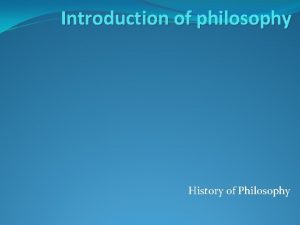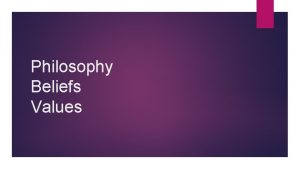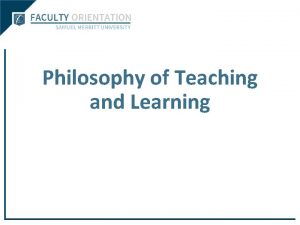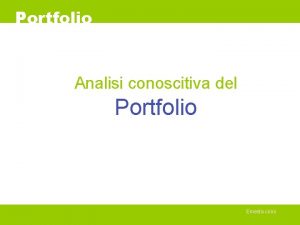THE TEACHING PORTFOLIO AND THE TEACHING PHILOSOPHY Mara























- Slides: 23

THE TEACHING PORTFOLIO AND THE TEACHING PHILOSOPHY Mara Barbosa Alejandra Carrillo-Muñoz

Today’s Objectives: You will… Identify appropriate and effective strategies to present evidence of teaching effectiveness. Plan, compose, develop and craft a teaching portfolio. Write/revise a teaching statement/philosophy based on search committees’ general demands.

Today’s Agenda 1. Pre-survey & Introductions 2. Intro: “What is a teaching portfolio” 3. The components of a teaching portfolio 4. Intro “The teaching philosophy” 5. The components of a teaching philosophy 6. Summary & post-workshop survey

Please take this time to fill in the pre-survey

The Teaching Portfolio “The teaching portfolio is a relatively short collection of materials and artifacts selected to document, summarize, and highlight one’s growth, experiences, and strengths as a teacher” https: //www. gradschool. unh. edu/pdf/pff_portfolio. pdf A Guide to the Electronic Teaching Portfolio Academic Programs in College Teaching University of New Hampshire Durham, NH 03824

Teaching Portfolio Continued The process of selecting and organizing material for a portfolio can help one reflect on and improve one’s teaching. Portfolios can offer a look at development over time, helping one see teaching as on ongoing process of inquiry, experimentation, and reflection. Portfolios are a step toward a more public, professional view of teaching as a scholarly activity. Center for Teaching at Vanderbilt University http: //cft. vanderbilt. edu/guides-sub-pages/teaching-portfolios/#what

Why a Teaching Portfolio? Job applicants use teaching portfolios to document their teaching effectiveness. Faculty members up for promotion or tenure can document their teaching effectiveness. Faculty members and teaching assistants can “go public”, especially those online invite comments from their peers share teaching successes so that their peers can build on them Center for Teaching at Vanderbilt University http: //cft. vanderbilt. edu/guides-sub-pages/teaching-portfolios/#what

The Teaching Portfolio MUST contain MAY contain Teaching Philosophy Examples of lessons Objective evaluations Video clip documenting Subjective evaluations Course syllabi (prospective) Samples of student work Courses taught Achievements teaching Teaching goals

Get Started on Your Teaching Portfolio • • • Never too Early! Many components are difficult (if not impossible) to obtain after a course has been taught Be true to yourself. Highlight the positive, but don’t completely omit the negative Be selective. Represent a cross-section of your teaching. Not just one aspect. Organize for your reader. Use a table of contents. Context & explanation. Describe the course, the students, and, if used the lesson plan. Also include a reflection on how well it worked. Center for Teaching at Vanderbilt University http: //cft. vanderbilt. edu/guides-sub-pages/teaching-portfolios/#what



Teaching Philosophy What is it? Self-reflective Concise (1 -4) Descriptive of your beliefs about teaching and learning (the most important ones) Descriptive of how you put your beliefs in practice Ever-changing

How to Get Started There as many ways to write a Teaching Philosophy as there are writers. Some initial tips include: Brainstorming Reading examples Answering some crucial questions: • • What do you teach? Why do you teach? How do you know you are achieving your teaching objectives?

Teaching Philosophy What else? : Be specific with content Show self-reflection Be descriptive and detailed Avoid jargon for clarity purposes

Teaching Philosophy Activity: From the list in your handout, select the 10 that are most important to you Now narrow selection to the top 3 that are most important Decide on the one, most important term Move into a group that shares your priorities Work together to explain and report ways in which you would implement those beliefs in the classroom (adapted from Ann Marie, Iowa State University)

Teaching Philosophy Peer Review Give your teaching philosophy to the person on your right (don’t have one? –raise your hand you will receive a teaching philosophy from the CIE) Read and evaluate the teaching philosophy you received according to the rubric Ask the author for permission to share good examples that demonstrate effectiveness

Objective Teaching Evaluations Present it in a concise way Explain what you are showing Highlight how you score well on items that you have highlighted in you teaching philosophy

Subjective Teaching Evaluations From students: Explain where the comments come from (all from one year, selected from different years…) Organize them (maybe group them by theme) From coordinators: Explain the objective of the courses in which you were observed. Explain the conditions that were evaluated

(Prospective) course syllabi Include a syllabus that you have created and implemented, accompanied by a short statement contextualizing it, and evaluating how well it worked when it was used Never had to design a course? Write a syllabus for a course you have taught or are likely to teach as a Professor

Samples of Student Work This might be a photocopy of a student paper, with marginalia and an end comment evaluating the essay or report as a whole. Contextualize it Ask for permission to use it, ALWAYS!

Courses Taught List of courses you have taught: Name and number School Your responsibilities Number of students Course description Learning objectives

Achievements List any of the following to you have received: Certificates Awards

Sources Lang, James M. "4 Steps to a Memorable Teaching Philosophy. The Chronicle of Higher Education. August 29, 2010. http: //chronicle. com/article/5 -Steps-to-a-Memorable/124199/ Center for research on learning and teaching – University of Michigan http: //www. crlt. umich. edu/tstrategies/tstpts Center for Teaching at Vanderbilt University http: //cft. vanderbilt. edu/guides-sub-pages/teaching-portfolios/#what
 Personal mission statement examples for students
Personal mission statement examples for students Sample philosophy of teaching
Sample philosophy of teaching Teaching philosophy examples
Teaching philosophy examples Teaching philosophy examples
Teaching philosophy examples Progressivism teaching philosophy
Progressivism teaching philosophy Philosophy of education realism
Philosophy of education realism Western electric rules
Western electric rules Teaching philosophy examples
Teaching philosophy examples Product principle in portfolio assessment
Product principle in portfolio assessment Esl portfolio example
Esl portfolio example Portfolio assessment matches assessment to teaching
Portfolio assessment matches assessment to teaching Comparison between micro teaching and traditional teaching
Comparison between micro teaching and traditional teaching Metabolomics
Metabolomics Sistema informatico
Sistema informatico Mara calabrese
Mara calabrese Types of typewriter
Types of typewriter Mara vergara
Mara vergara Santa mara length
Santa mara length Cuidados prenatales
Cuidados prenatales Nevienādība ar moduli
Nevienādība ar moduli Marta maras
Marta maras Señora ass
Señora ass Māra bērente
Māra bērente Natalia mara
Natalia mara



